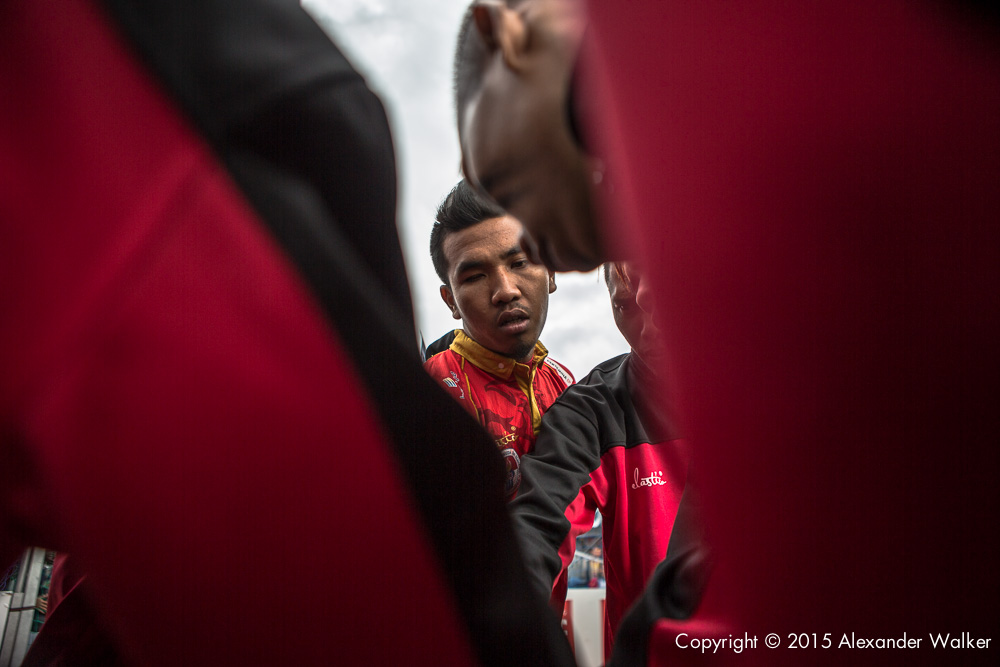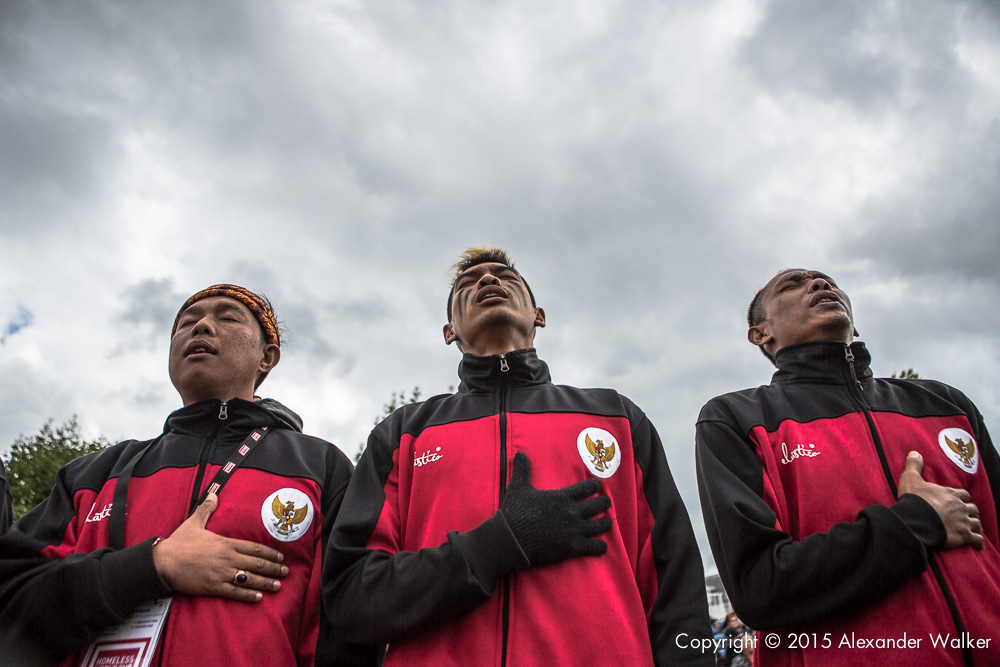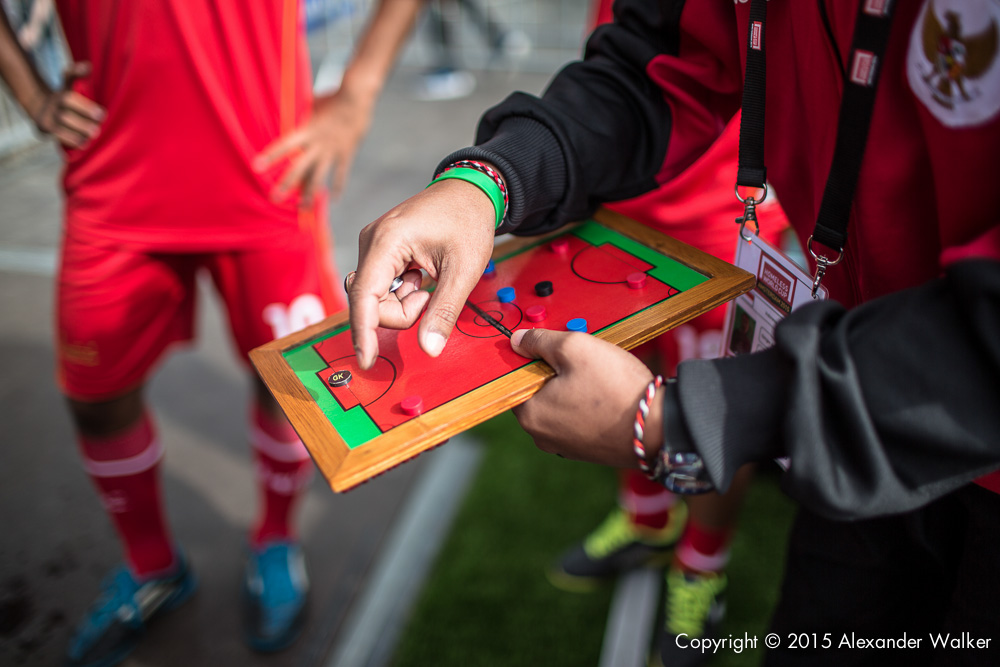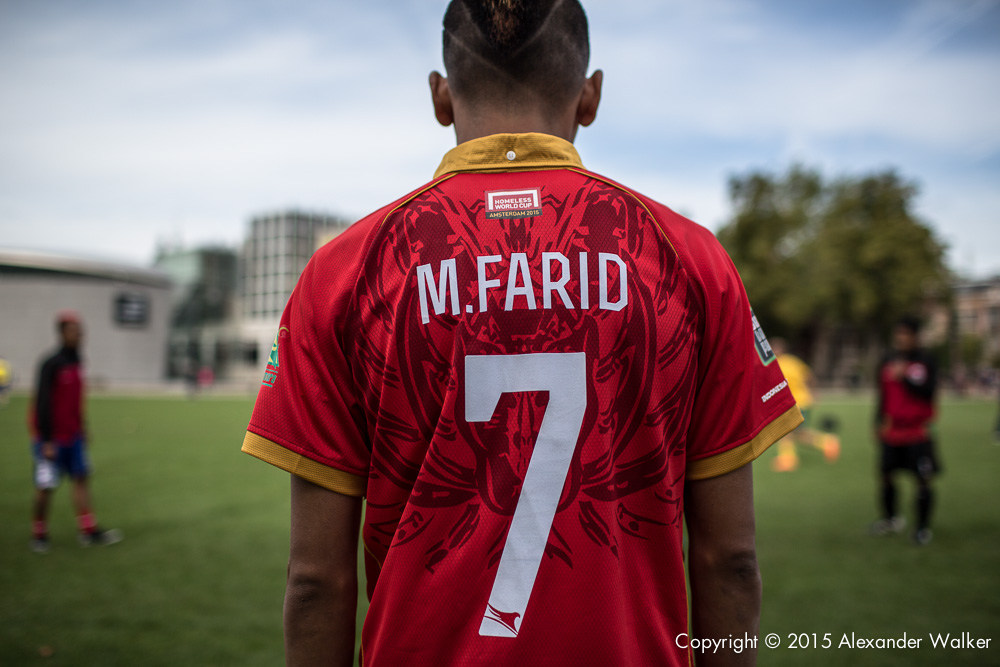I had the pleasure this year of working again for the Homeless World Cup organisation, covering their annual street soccer competition, this year being held in Amsterdam. It was brilliant to work with such a talented media team and i'm looking forward to sharing a few images and stories from the tournament over the next few days.
Words by Staff writer HWC©Homeless World Cup,
“WE WANTED SOMETHING UNIQUE FROM INDONESIA"
Few teams were more recognisable or beloved at the Homeless World Cup than Indonesia, with players sporting bright red mohawks and putting on war paint to take the pitch.
The hairstyles – cut and dyed especially for the tournament – were designed to be celebratory, identifiable, and fun. The war paint, donned prior to taking the pitch, gave the players extra courage. The two make the Indonesian players some of the most easily recognizable at the event.
“We wanted something unique from Indonesia,” said Indonesia’s Rokim of the hair and the war paint. “It’s sometimes like this, sometimes like this,” he said, clarifying that the players style their hair differently each day, just for fun.
Their team manager indicated that they entrusted the barber with deciding which styles were best, and they all laughed in agreement: they’d left the final styling decision to the pro.It seems the barber nailed the hairstyles, because the response from other players and the public was incredibly warm: “People like it,” Rokim added. “They say ‘nice cut,’ ‘nice hairstyle.’”
Such skin-deep accoutrements may seem like light icebreakers, but they at least partially have a more serious purpose: one of Rumah Cemara’s primary goals is to raise awareness about and reduce stigma around living with HIV/AIDS. The eye-catching hairstyles help them stand out.
Rokim, who hails from a rural area of Indonesia and whose parents are farmers, contracted HIV through non-sterilized tattoo equipment. He joined Rumah Cemara’s program in 2009 and was selected for the 2015 Homeless World Cup team. “I hope to have less stigma,” he says of his post-tournament aspirations. “I am hoping to have a better life.”
Teammate Kiki Kurnia grew up in a good family, but his parents divorced in high school and he started using drugs to cope. It was during this time that he contracted HIV. “I stopped using drugs and got married to a beautiful girl,” he says, but acknowledges that the HIV remains “the nightmare that is my life.”
“The hardest thing about living with HIV is the lack of acceptance,” he said, adding that the Homeless World Cup is “a tool for me to increase the quality of life and to change the perspectives of other people towards HIV.”
For him, Rumah Cemara offers a “comfortable place” that is safe.
So too does the Homeless World Cup. The best part of it, Kurnia says, is: “I can meet some people from other countries with different cultures, with different languages. Together we are one.”
The team came to the Homeless World Cup via Rumah Cemara, a community-based organisation that helps people experiencing drug and alcohol addiction, who are homeless or marginalised, or who are living with HIV/AIDS.







